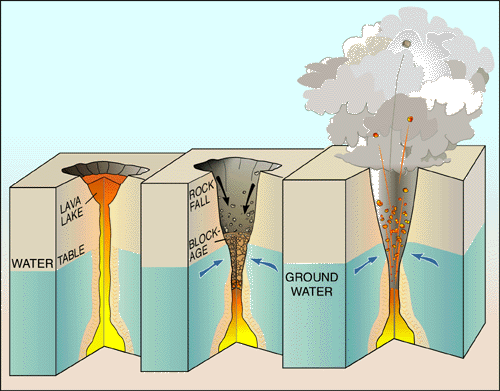A relatively clear day, May 31, finally allowed the USGS to get good, detailed drone footage of changes at the summit.
To orient you on the crater-within-a-crater-within-a-crater (Park Map):
- Kilauea Caldera is the megacrater, 2×3 miles across, on whose cliff walls are perched the Hawaiian Volcano Observatory, Kilauea Visitor Center and Volcano House.
- Halema’uma’u is a crater on the floor of Kilauea Caldera, about 2500 x 2900 feet. It held a lava lake in the 1800s, but drained and exploded in 1924, after which it was quiet for most of the 20th century.
- The Overlook Vent was a crater on the floor of Halema’uma’u containing a lava lake from 2008 until May 2018. It drained and has been exploding with steam and ash since the beginning of May. Rockfalls from its sides have enlarged it:
changes at kilauea’s summit, May 2018
May 5-29, USGS animation using radar data from Italian Space Agency’s Cosmo-SkyMed satellite:

May 23-31, new radar imagery shows more recent changes. The USGS caption notes that not only has the overlook vent widened, but also Halema’uma’u Crater:

Below, a compilation of video footage of Halema’umau and its lava lake in August 2016. Go to timestamp 2:10 for a good view of Halema’uma’u Crater with the Overlook Vent’s lava lake inside. Compare that with the May 31 video above. The black area is lava that overflowed onto the floor of Halema’uma’u when the lake’s level was high.
Halema’uma’u crater and its lava lake in 2016 (USGS).
Note: the “Overlook Vent” was named after the old Halema’uma’u Overlook, because that’s the side where the lava lake vent opened in 2008. There used to be a parking lot and viewing area on Halema’uma’u’s crater rim where visitors could look down into it. In 2008, the Overlook area was closed to visitors, because whenever there was a rockfall into the lake it tended to do THIS:




